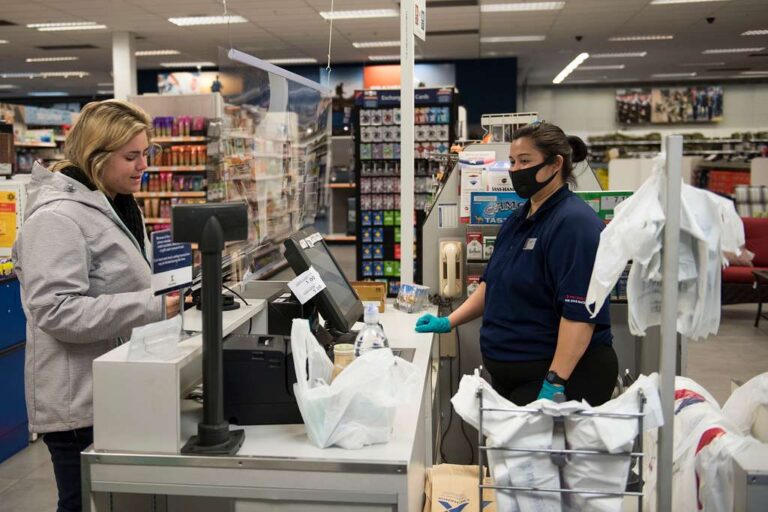
Cynthia Estlund is the Crystal Eastman Professor of Law at the New York University School of Law.
Cynthia Estlund is the Catherine A. Rein Professor at the New York University School of Law, and a longtime teacher and scholar of labor and employment law. This post is the second in a three-part series. Read the first part here.
Automation and Job Loss: What’s Law Got To Do With It?
The challenge of automation is in many ways continuous with the challenges of “fissured” work – to use David Weil’s influential formulation. In particular, both trends are driven in significant part by the costs and risks of employing human beings. According to investment banker Steven Berkenfeld, CEOs these days ask, “’Can I automate it? If not, can I outsource it? If not, can I give it to an independent contractor?’ Hiring an employee is the last resort.”
Part of the cost of employing humans stems from labor and employment laws. Some laws entail predictable direct costs, such as payroll taxes for social insurance programs, minimum wage and overtime laws, and the “pay or play” mandate of the Affordable Care Act. Other laws raise the cost of employing people by injecting risk, like the risk of litigation under laws prohibiting discrimination, harassment, or retaliation. Large corporate compliance departments, costing billions of dollars per year, are devoted in part to avoiding or managing these risks and liabilities.
The mere fact that labor and employment laws account for some share of the cost of employing humans obviously does not counsel a retreat from those laws, every one of which might make sense at the societal level: They might promote efficiency by generating public goods or overcoming information asymmetries or collective action problems; or they might serve just distributional ends or other non-economic values. But that does not undercut firms’ private incentive to avoid or evade those laws and their costs if they can do so. And increasingly they can do so – in part through fissuring, but more completely through automation.
So automation is in one sense just another tool in the toolbox of firms seeking higher profit margins by reducing the costs and risks associated with in-house labor. But automation is also different. Fissuring can partially but not totally insulate lead firms from the costs, needs, demands, entitlements, and foibles of the workers who perform outsourced tasks, and from the blowback that may hit even far-away lead firms when workers suffer abuse. Where it is both feasible and cost-effective, automation is the ultimate exit strategy from the costs of employing people. Robots have no human rights to be violated, and no bodies to be bruised or battered. And robots do not demand higher wages or form unions or go on strike.
Moreover, unlike people, robots get more capable and cheaper over time. Recall that Andrew Puzder, Trump’s first nominee for Labor Secretary, once predicted that robots would soon take over most jobs in his fast food restaurants: “If you’re making labor more expensive, and automation less expensive — this is not rocket science.” Indeed, it is not. It is Capitalism 101.
In short, the functional capabilities of machines are rising faster and with fewer apparent natural limits than those of humans; and humans cannot, and should not try to, keep pace with the falling cost of machines. While the gains from fissuring are still tied to the upper bounds of human performance and the lower bounds of the cost of human subsistence, automation transcends both. It is the ultimate exit from the costs and burdens of employing human labor, and from the body of law that regulates human labor. We lack legal tools for compelling capitalist firms to use humans to do things that machines can do better or cheaper or both, or for holding firms responsible for the humans whose labor they no longer need.
Moreover, raising the floor on wages, benefits, and working conditions inevitably strengthens the business case for automation to some degree. That is especially true at the bottom of the labor market, where minimum wages block firms from shifting the cost of mandates onto employees. And it includes at least large increases in the minimum wage (as liberal economist Jared Bernstein acknowledges here). At the point that robots can perform as well as humans or better at a lower cost, they will be irresistible to profit-seeking managers.
A similar dilemma plagues the prevailing legal responses to fissuring, which seek to expand lead firms’ responsibility for the workers on whose labor they depend. Hence the proliferation of efforts to combat misclassification of employees as independent contractors, to broaden the definition of “employment,” or to impose legal responsibility on lead firms for their suppliers’ employees through the concept of “joint employment.” Much important and creative work is being done in this vein. But the exit option of automation confounds this sensible strategy. The more successful worker advocates are in holding lead firms legally responsible as employers for the workers who supply their labor inputs, the greater those firms’ incentive to replace workers through automation if possible. If McDonalds, Inc., is held to be the employer of its franchisees’ employees, or if Uber is held to be the employer of its drivers, then those firms are marginally more likely to turn to robots or self-driving vehicles.
There is a powerful logic behind the multifaceted effort of worker advocates and labor scholars to reconnect the most profitable and capable firms at the pinnacle of the economy with the deteriorating wages and working conditions of the workers who supply the necessary labor inputs. Those lead firms have deliberately fostered and reaped gains from the competitive dynamics that drive down labor costs and labor standards in most supplier markets. But this response to fissuring not only fails to meet the looming, still uncertain challenges of automation-based job loss; it might exacerbate those challenges by tilting firms’ calculus further away from human labor.
At this point, readers will wonder where I am heading with this argument: Are worker advocates and policy makers now supposed to dismantle workers’ rights and labor protections in order to marginally slow down an uncertain process of job destruction from automation? Or is it possible to reduce the legal tax on employing human labor without undermining the quality of work for all those who work for a living in the future? Stay tuned for the third installment. Or read the whole paper here.









Daily News & Commentary
Start your day with our roundup of the latest labor developments. See all
October 26
California labor unions back Proposition 50; Harvard University officials challenge a union rally; and workers at Boeing prepare to vote on the company’s fifth contract proposal.
October 24
Amazon Labor Union intervenes in NYS PERB lawsuit; a union engages in shareholder activism; and Meta lays off hundreds of risk auditing workers.
October 23
Ninth Circuit reaffirms Thryv remedies; unions oppose Elon Musk pay package; more federal workers protected from shutdown-related layoffs.
October 22
Broadway actors and producers reach a tentative labor agreement; workers at four major concert venues in Washington D.C. launch efforts to unionize; and Walmart pauses offers to job candidates requiring H-1B visas.
October 21
Some workers are exempt from Trump’s new $100,000 H1-B visa fee; Amazon driver alleges the EEOC violated mandate by dropping a disparate-impact investigation; Eighth Circuit revived bank employee’s First Amendment retaliation claims over school mask-mandate.
October 20
Supreme Court won't review SpaceX decision, courts uphold worker-friendly interpretation of EFAA, EEOC focuses on opioid-related discrimination.